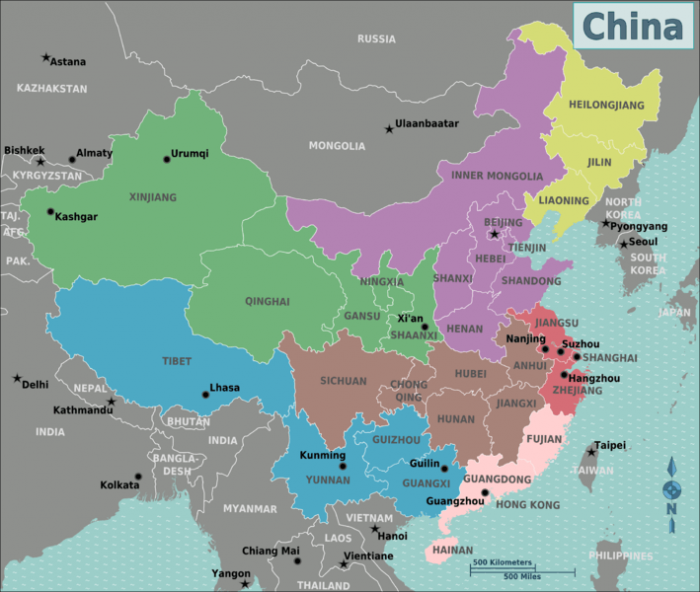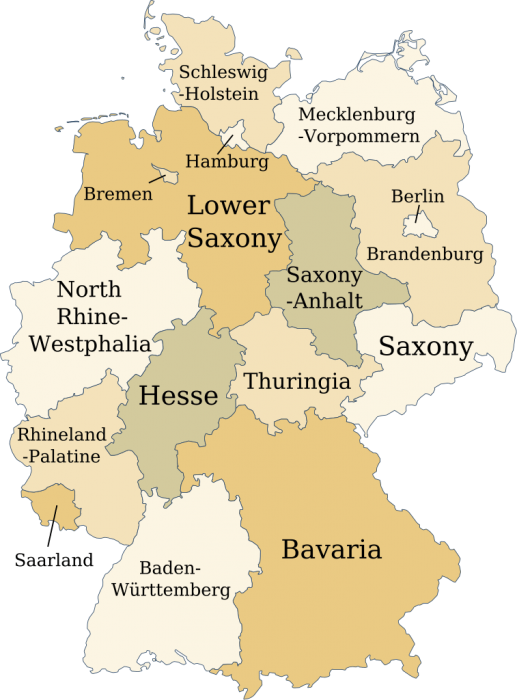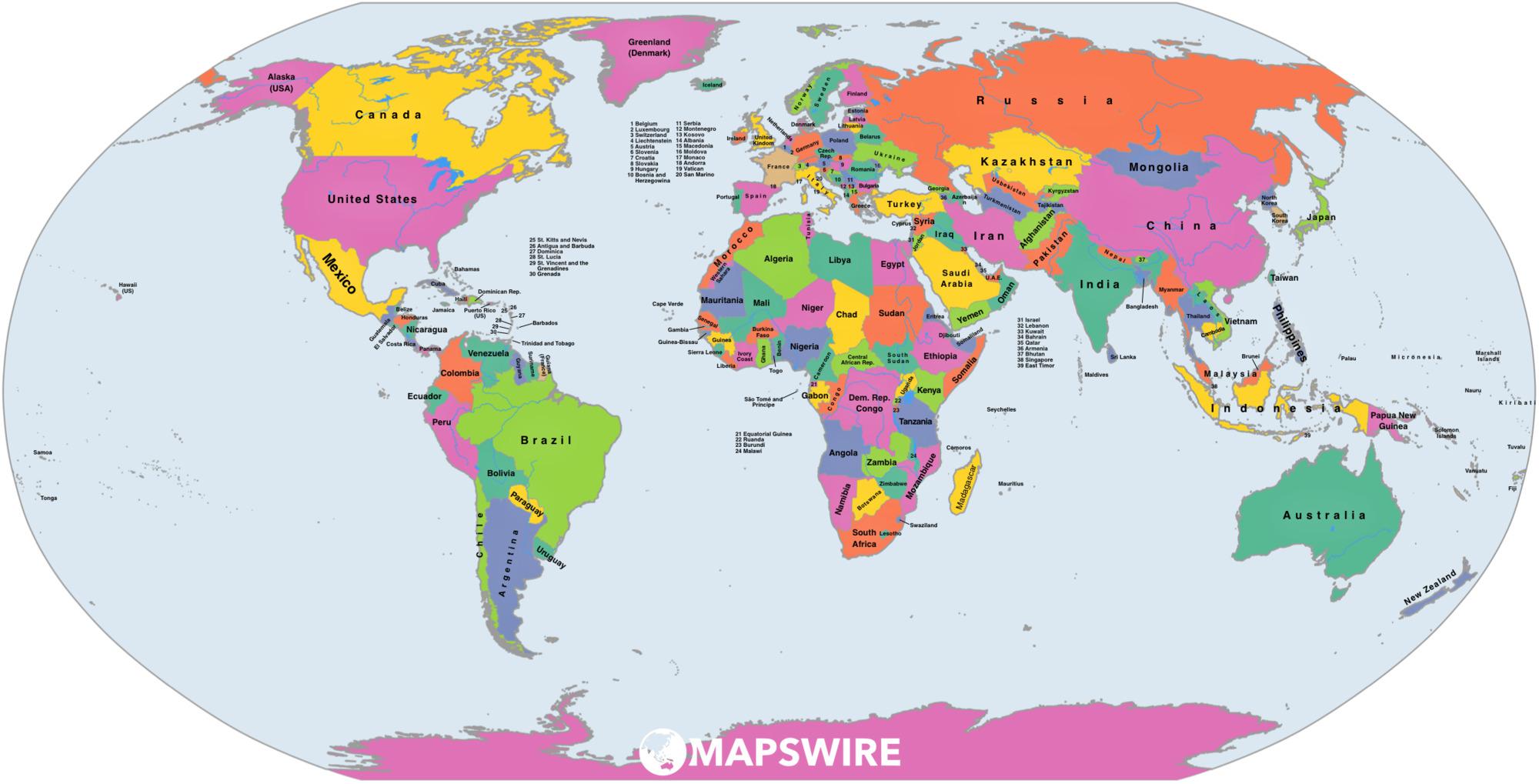
Everyone knows what a map is. Maps, in general, are a pictorial representation of some place that allows people to better identify things and their relations in that place. A political map represents the geographical boundaries of nations, states, and cities. Political maps are a way to figure out which countries lie where, and which government is control of which territory. A political map can be contrasted with a geographical map, which shows the physical features of the different parts of the land, like elevation, temperature, or soil composition.
As of 2019, there are 195 nation-states in the world divided among 6 continents, North and South America, Europe, Asia, Africa, and Australia. The 7th continent of Antarctica is the only continent in the world that does not have its own sovereign nations but contains territories claimed by 7 other countries. Most political maps represent the different nation states as distinctly colored regions that are separated by lines. The line on a political map represents the physical boundary of the territory in control by that nation.
Blank Printable Political Map Of The World
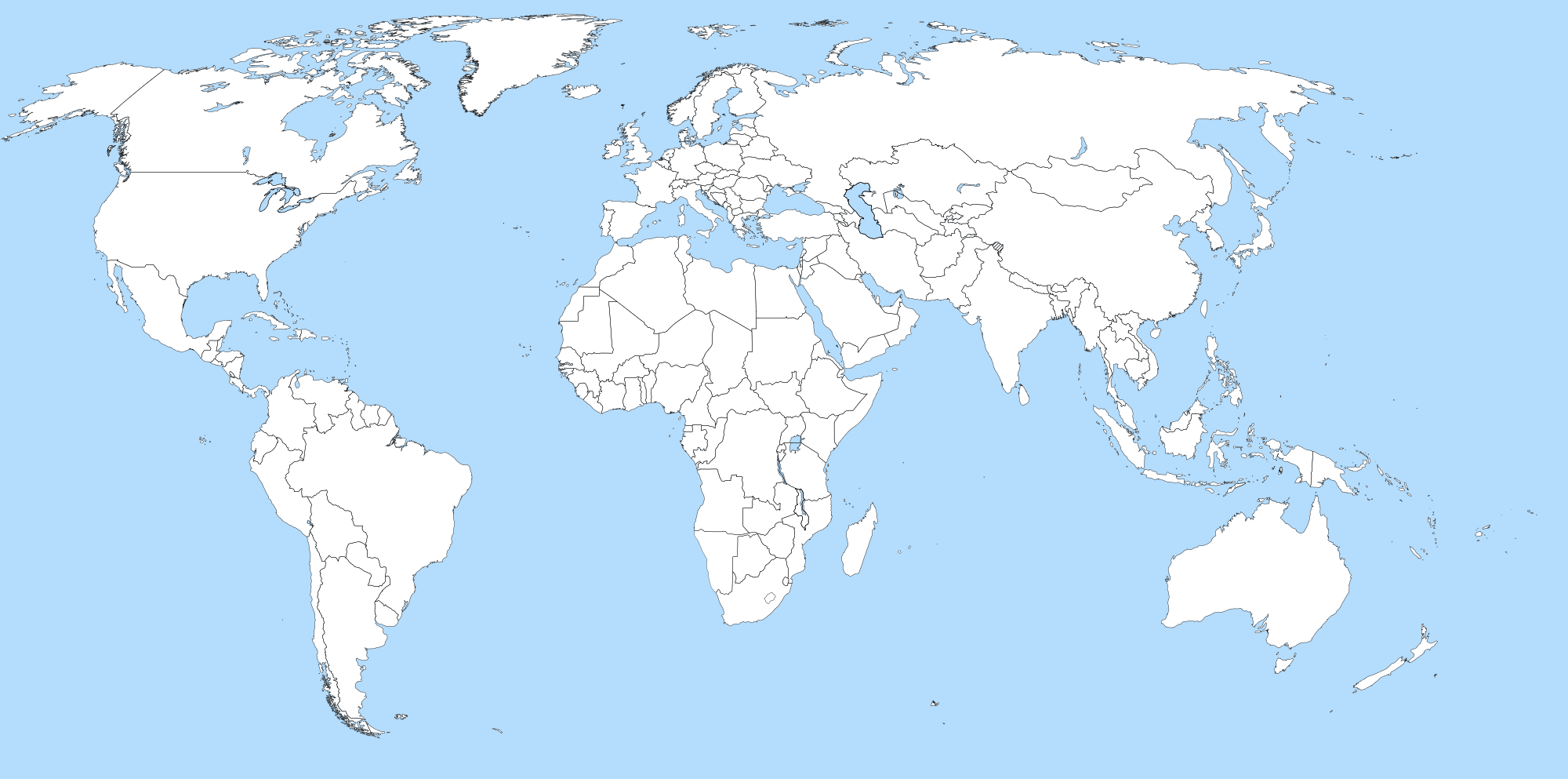
Credit: WikiCommons CC0 1.0
Above is a blank political map of the world, available for printing and filling out.
Major Political Powers By Continent
Asia
Asia is the largest continent in the world by both landmass and population. It covers 30% of the Earth’s total land area and is home to over 60% of the world’s population (4.5 billion people). As of 2019, there are 48 globally recognized nation-states in Asia, 3 of which (Turkey, Russia, and Kazakhstan) are partially located in Europe.
Throughout much of prehistory, antiquity, and modern history, Asia contained the largest economies in the world (e.g. China and India). During the age of exploration, European merchants and explorers were drawn to Asia due to tales of the continent’s legendary wealth and ancient cultures. Asia has been home to countless political empires over the millennia and most of the world’s major religions originated in Asia.
China
Through all of recorded history, China has been one of the largest and most powerful countries in Asia. The first civilizations of China emerged in the 4th millennium BCE along with some of the world’s first writing systems. For much of its existence, China has been ruled by dynastic monarchies, beginning with the semi-legendary Xia dynasty in the 21st century BCE. Since 1949, the People’s Republic of China has been ruled by the Communist Party of China.
The nation of China is divided into 22 provinces and 5 autonomous regions, each with its own local administrative government. The president is voted on by the National People’s Congress, the largest parliamentary body in the world. The current president of China is Xi Jinping. China has seen unprecedented amounts of economic growth over the past 40 years, making them the second highest GDP in the world as of 2016. China is the world’s most populous country with over 1.3 billion people and also holds the largest standing military body in the world, the People’s Liberation Army.
There is currently controversy over the political relationship between Taiwan and mainland China. The PRC considers Taiwan to be the 23rd province, though the Taiwanese government rejects this claim and considers Taiwan its own sovereign state.
India
India is the 7th largest country by land in the world and the second most populous country, with 1.2 billion people. Politics in India have historically been dominated by warring factions vying for imperial control. The largest of these empires, the Mughul Empire, existed from the mid-16th century CE until the 18th century, at which point the country came under colonial British rule. India regained its independence from the Crown in 1947.
Since the 1950s, Indian has been a democratic republic. The country is divided into 29 states and 7 territories. Currently, Indian politics consists of 7 nationally represented political parties. The Indian government is divided into three branches, Executive, Legislative, and Judicial branches. The president is the head of the executive branch and the de jure head of state. The current president of India is Ram Nath Kovind.
Europe
Europe exists in the northern hemisphere, west of Asia and North of Africa. Europe is not physically separated from Asia, and the exact boundary separating the two has been defined in numerous ways through history. Politically, Europe contains approximately 50 sovereign states, with the largest geographically and population-wise being Russia. Europe accounts for about 11% or the world’s populations (741 million people). Today, many nations in Europe are part of the European Union, an international political union made up of 28 member states across the continent.
Germany
Germany is a country in central/western Europe, situated east of France and west of Poland. The current nation of Germany has existed in some form since 1871, the most recent reorganizing of the government taking place in 1990 with the reunification of West Germany and Soviet-controlled East Germany in 1990. A major leader in technology and science, Germany is a global power and has the 4th largest economy in the world.
Germany is a federal republic consisting of an elected parliamentary body that votes on a president and a chancellor. The current president of Germany is Frank-Walter Steinmeier and the current chancellor is Angela Merkel. German politics is divided into two main parties, the Christian Democratic Union and the Social Democratic Party of Germany. Germany is divided into 16 states referred to as Bundesländer. Each state has its own constitution and a certain degree of autonomy from the federal government.
France
France is one of the oldest countries in Europe, tracing its founding back to King Clovis I in the 5th century CE. Before Clovis I, the region of France went by the name of Gaul and was under Roman occupation. France emerged as a major European power during the middle ages and was a major player in the subsequent age of exploration, Enlightenment, and modern period.
Today, France is a Constitutional Democratic Republic. The French parliament is divided into two bodies, the National Assembly and the Senate. Members of the National Assembly are elected directly by the people, while members of the Senate are indirectly elected. The executive branch has 2 leaders; the president and prime minister. The current president of France is Emmanuel Macron and the current Prime Minister is Edouard Philippe.
Africa
Africa is the worlds second largest continent by land area and the second most populous. Africa is home to the oldest known human dwelling sites and It is widely accepted that anatomically modern humans first developed in Africa some 300,000 years ago, and migrated from the continent all over the world. Africa was home to the Ancient Egyptians, one of the oldest civilizations in the world. Before colonialism, Africa contained an estimated 10,000 distinct polities. After the 19th century, essentially all of Africa was under European colonial rule. The current day political landscape of Africa is a direct result of the liberation of African nations from colonial powers over the past 150 years. Africa currently holds 54 recognized sovereign nation states.
Nigeria
Nigeria is the largest country in Africa in terms of population and economy. Present-day Nigeria traces its formation back to liberation from British colonial rule in 1960. Nigeria is the richest country in Africa with an annual GDP of 500 billion USD. Nigeria is a founding member of the African Union.
Nigeria is a federal republic whose model is based on that of the United States. Their government consists of a democratically elected president who serves as the head of the executive branch. The president’s power is checked by the Senate and House of Representatives, both consisting of elected members.
North & South America
North & South America are the two continents west of Europe, Asia, and Africa. The Americas constitute 28 % of the world’s landmass and extend over more latitudinal distance than Europe, Asia, or Africa. The Americas are sometimes nicknamed “the New World.” The Americas contains over 1 billion people, two-thirds of which live in the U.S., Brazil, or Mexico.
Much of the current political landscape of the Americas stems from European colonialism. Mass migration from European settlers resulted in various European nations gaining a foothold in the Americas.
Brazil
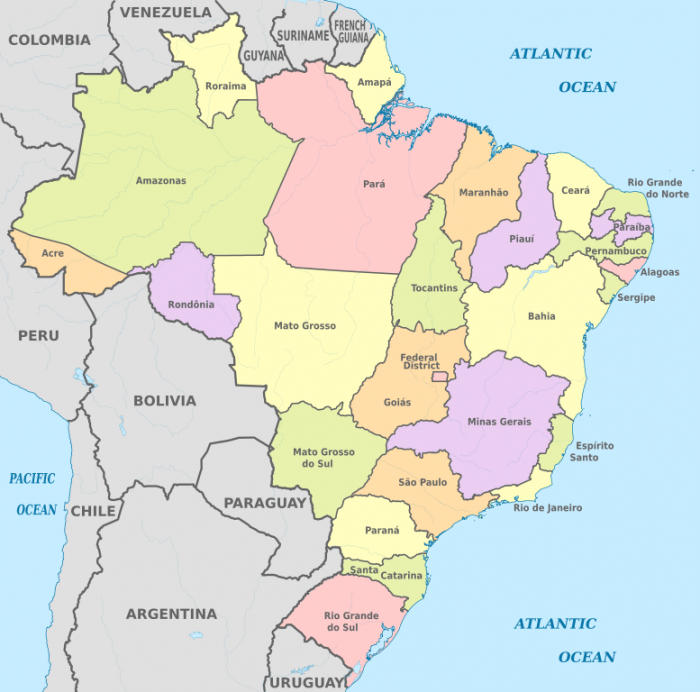
Credit: TUBS via WikiCommons CC BY-SA 3,0
Located in South America, Brazil is the 5th largest country in the world and also the 5th most populous. Brazil was one of the first modern South American countries to gain independence from colonial rule in 1822 with the formation of the Empire of Brazil. Currently, Brazil is a democratic federal republic. It has the 8th largest GDP in the world and is the single largest producer of coffee in the world.
Brazil has a 3 branch government with a president elected head of the executive branch. All members of the executive and legislative branches are directly elected by the people, while members of the judicial branch are appointed. Brazil also has the largest military in South America.
Australia
Australia (sometimes called Oceania) is the smallest of the 7 traditional continents. Australia is the smallest of the continent and the one of the oldest inhabited. Paleoanthropologists believe that the indigenous people of Australia descend from the first human migration out of Africa. The continent of Australia consists of three nations: the same-named country of Australia, New Zealand, and Papua New Guinea.
Australia
The country of Australia consists of the main landmass of Australia and the neighboring island of Tasmania. Australia has a population of about 25 million, mostly concentrated on the eastern seaboard. Indigenous peoples have been living in the landmass of Australia for over 60,000 years before the arrival of European colonial powers. Much of Australia fell under colonial rule. The current-day nation of Australia emerged in 1901 when 6 independent colonies federated, creating a sovereign nation.
Australia is a constitutional monarchy whose government is divided into three branches, judicial, executive, and legislative. The executive branch is ruled over by the prime minister. The current prime minister of Australia is Scott Morrison. Australia is divided into 6 states and 2 territories. Each state has its own parliament consisting of elected representatives.




